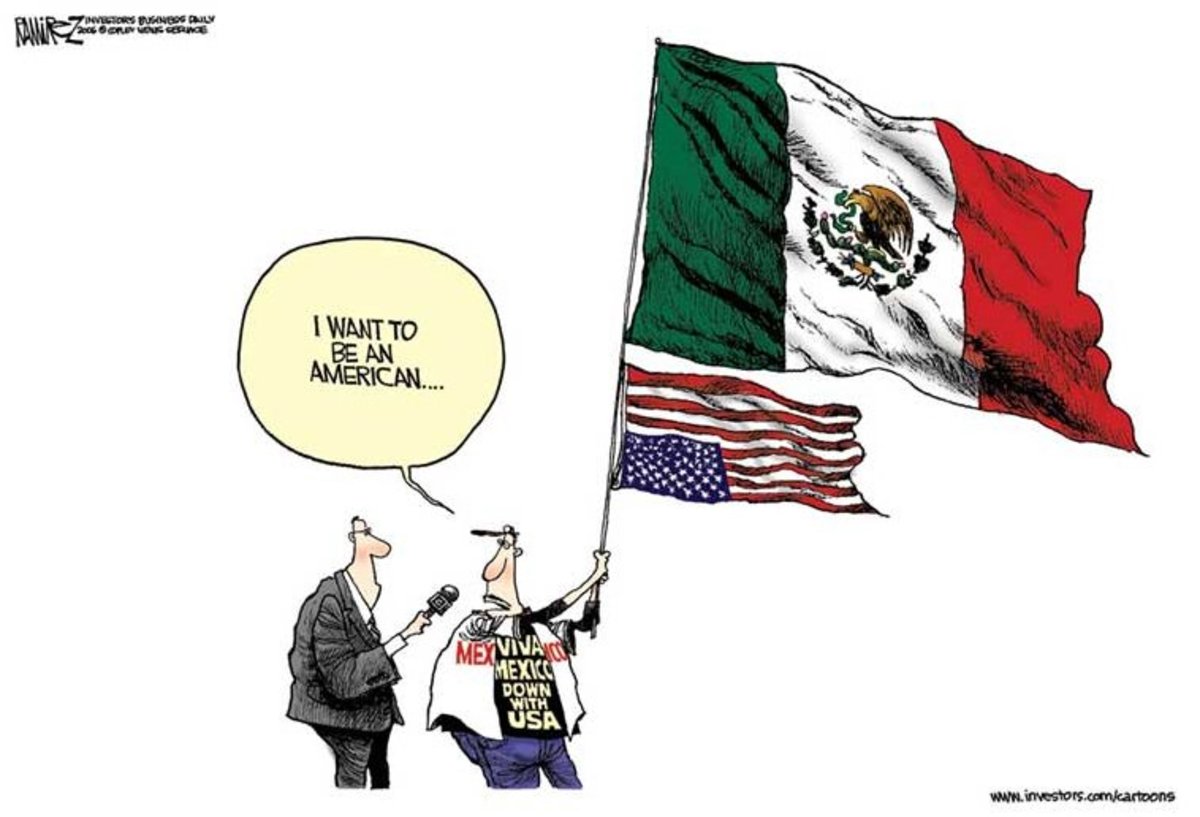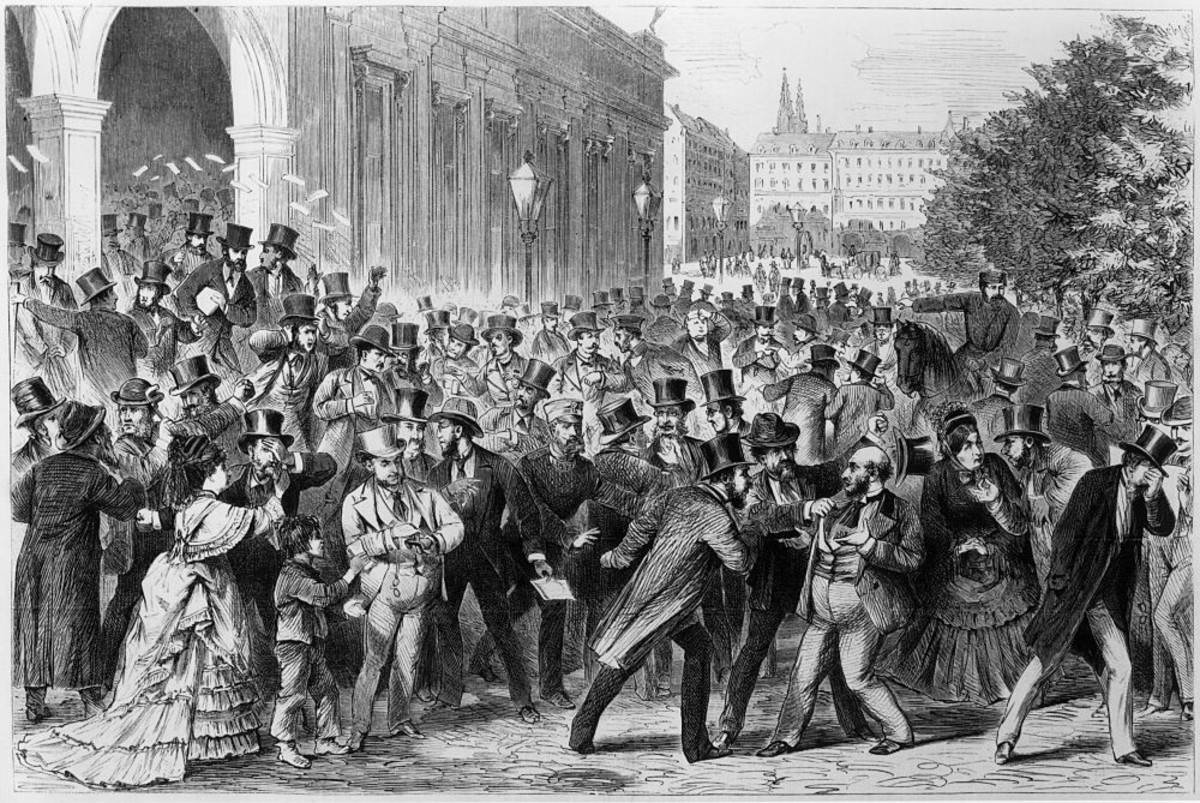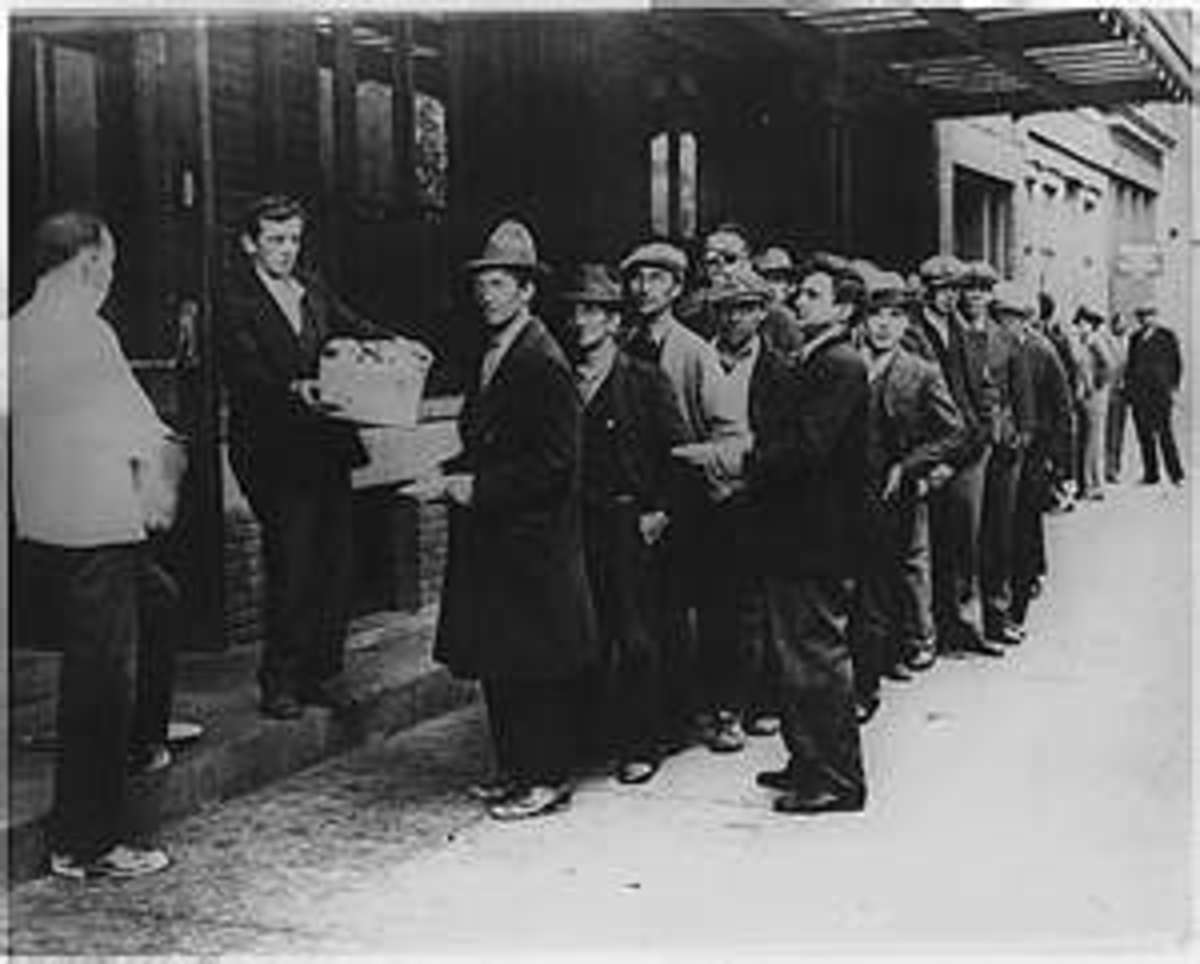Bailing out America's Big Three Automakers Is Bad Policy
The Big Three Automakers are Paying the Price for Bad Decisions in the Past
In the closing days of November 2008 the big national debate is about whether or not to bail America's big three auto companies (GM, Ford and Chrysler) out of the mess that has resulted from past management's bad decisions over the last half century.
Supporter's of the bailout argue that the United States is losing its manufacturing base and that it is imperative to maintain the auto industry, which is a major manufacturer, in order to avoid further erosion of this base. The other main argument is that by not bailing these companies out with taxpayer dollars, thousands of people are likely to lose their jobs, and this job loss is not limited to the big three automakers but extends to thousands of workers in the supplier and dealer networks.
For much of the twentieth century, housing, which is also in bad shape economically at the moment, and cars have been major drivers of the nation's economy. It was not so much that the housing construction and car manufacturing companies employed that many people, they didn't, but there were thousands of industries that relied on housing and cars. Among these were suppliers who provided inputs needed to build homes and manufacture cars as well as many more thousands of companies that either supplied buyers with related products (such as gasoline for cars) necessary to maintain and operate homes and autos after purchase or relied on these products to sell their products (the fast food industry relies on automobiles as consumers visit these places mainly for the convenience of being able to drive over and pick up the food quickly; many people have a TV in every room so in a 1 bedroom apartment with a kitchenette they would purchase 2 televisions sets - one for the bedroom and one for the living room - but if they purchase a 3 bedroom home with a full kitchen they would need three more TVs - one for each of the two additional bedrooms and one for the kitchen). Housing and automobile purchases were so critical to government economic managers that from the 1940s through the 1980s the government could stimulate the economy by using monetary policy to reduce interest rates thereby making it easier and less expensive for people to purchase homes and cars. And, when economic policy makers felt the economy was becoming overheated and inflation threatened, they would cool off the economy and reduce inflation by raising rates thereby making borrowing more difficult and reducing spending throughout the economy (policies to slow down the economy resulted in an increase in unemployment which was very effective way of reducing consumer spending).
Given the above two arguments, a bailout of the auto industry would appear to be the right thing to do to help the U.S. economy which, at the moment, is in bad shape and appears to be getting worse. However, in order to justify a bailout the above two arguments would have to be true. However, on closer analysis we see that they are not true.
America's Manufacturing Sector is as Big and Strong as Ever
As for manufacturing, the United States continues to be a dominant producer of manufactured goods. Our manufacturing base is as large as it has ever been. What has been steadily declining in recent years is not manufacturing output but manufacturing jobs and the portion of the U.S. economy devoted to manufacturing.
During the industrial age a majority of workers were employed in the manufacturing sector and the majority of these jobs were labor intensive and required few skills. Today other sectors of the economy have sprung up and are competing with manufacturing for the nation's limited supply of labor. To remain viable in an economy where wages are rising and prices falling, manufacturers have been forced to invest in more automation which requires a higher skilled, and higher paid, workforce. A few years ago an article in the Wall Street Journal described the closing by General Motors of a couple of aging manufacturing plants which resulted in the laying off of a few thousand assembly line workers. At the same time GM opened a new plant in a nearby town which produced the same cars and had a payroll about the same as that of the combined payroll of the plants they closed. Unfortunately, the semi-skilled workers who had previously done the physical labor of assembling cars on the assembly line and had lost their jobs were unable to transfer to the new plant as all the jobs at the new plant required a high degree of technical skills as all of the work of assembling cars on the assembly line was now being done by robots and the new jobs involved programming and managing the robots. Other things being equal, GM could have continued production at the old plants as there was not only no reduction in labor costs resulting from the substitution of robots for human workers on the line due to the fact that GM had to pay higher salaries to the new tech workers managing the robots but also had to invest millions of dollars to acquire the robots and other high tech equipment used in the plant.
While many bemoan the shrinking job opportunities for unskilled workers, the fact is that the pool of unskilled workers itself is shrinking and basic supply and demand theory in economics states that when the supply of anything, including labor, is reduced the price of that commodity will increase. So, as the pool of unskilled labor shrinks, the cost of recruiting and retaining such labor increases. However, since the output of such labor does not increase, the cost of production increases. If competitors are able to hold the line of their prices then producers facing rising labor costs are forced to make one of three basic choices - automate, move abroad to areas with cheaper labor or go out of business. The first choice, automation, involves increasing the ratio of capital (machines and equipment) per worker which results in the use a smaller number of higher skilled, and higher paid, workers to produce the same amount of product. As to why the pool of unskilled labor is shrinking we have only to look in the mirror to find the blame as we, in our capacity as workers seeking advancement, as parents seeking a better life for our children, as teachers providing current and future workers with more education and skills and as taxpayers funding education and training opportunities, are responsible for the decline in unskilled labor.
Since the founding of the Untied States, the philosophy of each generation has been to lay the groundwork for our children and grandchildren to be better off economically than we are. To this end we send our children to school and pay for college educations for them as well as sacrifice and strive to improve our own skills and education. While manual labor may be noble, what person invests thousands of dollars, as well as time, in a college education for themselves or for their children with the intention of, once the degree is received, going to work for minimum wage job as a laborer?
People invest in improving their skills in order to be able to take advantage of higher paying jobs doing things like designing and building robots for factories or managing robots on an assembly line. When the United States declared its independence and became a separate nation in 1776 over 90% of the labor force was involved in agriculture. The growing and harvesting of food was the major, almost the only, sector of our economy. With the dawn of the industrial revolution, manufacturing began to expand rapidly and workers suddenly had a choice between staying on the farm or moving to the cities to work in factories. To entice workers to come and work for them, manufacturing firms offered higher pay and fewer work hours. The result was that, as manufacturing increased the portion of the economy and the labor force devoted to agriculture shrank. Agriculture didn't disappear, it automated and substituted capital for labor and while the number of farming jobs shrank drastically (going from over 90% of the workforce in 1776 to less than five or ten percent today) workers, instead of being idled moved to manufacturing. Today, no one worries about the fact that agriculture, as both an employer and sector of the economy, has been drastically reduced. Ironically, while the portion of the economy and labor force devoted to agriculture has shrunk by over 90%, the United States remains a major agricultural producer and exporter and our over all agricultural output is thousands of times what it was in 1776.
The Consolidation and Decline of America's Car Companies
So much for the loss of American manufacturing. Turning to the auto industry we also find changes and surprises. The United States was once the major producer of automobiles in the world and, for a short time following World War II and its accompanying destruction of much of the industrial infrastructure of Europe and Japan, we were almost the only producer of automobiles. In the early part of the twentieth century there were numerous companies manufacturing automobiles but this number was steadily reduced as economies of scale (in certain industries, like automobiles, the cost of per unit of output decreases as the scale of output increases) forced numerous smaller companies to combine into a fewer number of large companies such as General Motors which was created by the merger of many companies that were once small, independent firms.
By the end of World War II the playing field had been reduced to about a dozen companies that included the big three (General Motors, Ford and Chrysler) plus their much smaller brethren. The smaller producers in the industry included Kaiser Motors (which ceased auto production in 1955), Crosley Motors (which stopped producing automobiles in 1952), Hudson Motor Company (which merged with Nash Kelvinator in 1954), Studebaker Corporation (which merged with the Packard Motor Co. in 1954), Packard Motor Co. which acquired Studebaker Corp and changed its name to Studebaker-Packard and Nash-Kelvinator Corporation (Nash Motors had previously merged with Kelvinator Corporation, a manufacturer of refrigerators, in 1938 to form Nash-Kelvinator, which, in turn, merged with Hudson Motors to form American Motors Corp in 1954). Studebaker-Packard Corporation struggled to stay in the automobile manufacturing business until 1966 when, after years of steadily declining sales forced to to close its last automotive plant. The company itself survived, and today exists as a leasing company under the name Studebaker-Worthington. American Motors survived until 1987 when increasing losses forced it to merge with Chrysler Corp. With the demise of American Motors only the big three remained as the sole survivors of the American auto industry.
All of the companies above were created by Americans in the United States and began their existence producing cars for the American market. Ford, GM (General Motors) and Chrysler eventually expanded overseas first as exporters of cars and then opened production facilities abroad. The big three were industrial giants and as recently as six or seven years ago I used to give my beginning economics students an example of the sheer size of the U.S. economy relative to the rest of the world by pointing out that not only were we the largest economy in the world in terms of output but if we were to spin off California and General Motors as separate nations not only would the U.S. remain the largest economy in the world but that California would be one of the top ten nations in terms of output and General Motors (based upon its world wide annual revenue) would be in the top twenty. As of this past Friday (November 21, 2008) the total value of General Motors stock, which closed at $3.06 per share, was 1.8 billion dollars, a price at which Bill Gates or any one of the numerous other individual billionaires in the U.S. could afford to simply write a check and purchase the entire company.
This is quite a fall for this company that, not that many years ago, was the largest company in the world in terms of sales. However, while the big three are chartered and headquartered in the United States and once constituted the U.S. auto industry they no longer constitute the American auto industry and Michigan and its neighboring rust belt states are no longer the centers of automobile production in the United States. In recent years numerous foreign owned automobile companies have built production facilities in southeastern states where the U.S. now has a thriving and relatively healthy auto industry along with the ailing auto industry to the north.
This Would be a Bailout of the Michigan, Not the U.S. Auto Industry
Realistically, when we talk about bailing out the auto industry we are not talking about the American auto industry but rather a subset of that industry which is concentrated in Michigan and surrounding states. So really what we are asking the American taxpayers as a whole to do is to bailout the Michigan auto industry.
Looked at this way the problem is more of a state or regional than a national economic problem. Given the number of workers employed by the big three the direct effect on unemployment if the companies shut down completely and lay them all off would not be that great nationally although it would have a big impact on Michigan. However, the alternative to a bailout is bankruptcy, not shut down. Companies generally not only continue operating and keep existing employees working but usually recover and often prosper and expand following bankruptcy. Finally, this is not the first bailout for these firms as we already bailed out Chrysler in 1979 and lessons can be learned from that event. In 1979, just as we are hearing now, we were warned that a failure to pump taxpayer dollars into Chrysler would result in the collapse of the company resulting in unemployment and other economic dislocations due to the shutting down of factories and loss of Chrysler as a customer to their numerous suppliers. Critics of the bailout argued that not bailing out the company would result bankruptcy, not shutdown, and that in either case the result would be a closing of obsolete plants along with the discharge of the workers in them and a selling off of inefficient divisions to other companies that would run them better, but differently, while retaining most of the employees in those divisions. The government, under the leadership of President Jimmy Carter, chose to throw taxpayer dollars at Chrysler with the result that, as predicted by critics of the bailout, Chrysler used the funds to keep operating while it closed obsolete plants and discharged their workers and sold off inefficient divisions to others. True, the bailout was in the form of loans from the government which Chrysler eventually paid back in full. However, the taxpayers who provided the funds for the bailout loans never got back so much as dime of the principal let alone any of the interest in the form a rebate check as Congress and the bureaucracy simply recycled the money into favors for other special interests. While the surface result of the bailout was the same as a bankruptcy the deeper economic differences were major. First of all, the stockholders and creditors didn't lose anything under the bailout (and those who purchased the stock when it was low just prior to the bailout profited greatly when it recovered following the bailout) while the American taxpayers, who put up the risk capital to keep the company alive got nothing other than the opportunity to continue buying cars with the name Chrysler (an option that few of us have exercised given the company's low sales and continuing troubles). Suppliers, dealers, the United Autoworkers Union (UAW) and Michigan communities benefited by the fact that the status quo was maintained thereby allowing them to continue with business as usual - again this was a state and regional, not a national benefit.
Legacy Costs are the Root of the Problem
The real damage done by opting for the bailout over bankruptcy in 1979 was that Chrysler was not forced to confront and fix the fundamental problem which was its rising legacy costs. While it is true that much of Chrysler's problems at the time of the 1979 bailout could be attributed to the loss of market share by the big three to foreign competition, legacy costs were one of the major reasons why Chrysler and other two big three auto companies were unable to compete effectively with the foreign companies. Since 1979 all three of the big three U.S. based auto companies have improved quality and efficiency to the point where they are as good or better than the competition. But the ever growing legacy costs negate much of the cost savings these companies have made on the production side of the business.
Legacy costs refer to costs related to contracts entered into decades ago and which keep increasing. Recent figures give the total number of auto workers employed by the big three in the United States (note - this number does not include workers in the Canadian province of Ontario which lies across the river from Detroit, Michigan but may include Canadian workers who commute to jobs in Michigan) is about 241,189 with a little over half of them employed in the state of Michigan. However, in addition pay and benefits for these workers the big three also have over 1 million additional people who receive monthly pension checks and gold plated health benefits - these are the retirees and their spouses and dependents. This is the labor cost that is driving these companies to ruin. They also have a dealer network that is larger than necessary that further drains their resources.
This web of ancient contracts is what is pulling these companies down and keeping them from being competitive in today's global marketplace. In addition to being a period of rising prosperity at home and America's adjusting to its new status as the major economic and political power in the world, the period immediately following the end of World War II was also one of intense labor strife as unions freely flexed the muscle acquired under Franklin Roosevelt's New Deal. With the exception of the Taft-Hartley Act of 1947 which reigned in the power of unions slightly (most notably its clause that gave states the right to legislate whether or not workers in their state could be forced to join and pay dues to a labor union as a condition of work) labor legislation from the beginning of the twentieth century to mid-century was highly favorable to unions and, with the government at their side, unions were able to grow strong and powerful.
Unions were especially powerful and successful in the manufacturing sector of the economy which was increasingly dominated by large firms. Industries like autos, steel, coal mining, etc. which were dominated by a few large domestic companies and faced little or no competition at home or abroad, were in a position to be very profitable. Lacking serious competition, these companies not only had little incentive to lower prices to compete but, more importantly, lacked incentive to aggressively cut costs by becoming more productive. Stockholders wanted a good return on their investment, workers wanted high wages and while consumers were left with the choice either buying from these oligopolies or going without, prices had to be kept somewhat in line in order to keep the product affordable. As union wage contracts approached expiration, battle lines were drawn as union and management sat down to fight over the terms of the new contract. Unions naturally wanted a bigger piece of the profit pie and the negotiations were often contentious as both sides fought over how the pie was to be divided. If the union felt that management was not giving as much as they could reasonably afford they would halt production by striking - and strikes were a frequent fact of American economic life in the 1950s and 1960s.
To buy labor peace while, at the same time keeping stockholders and consumers happy, the big three adopted a policy of meeting unions part way on current wage increases and making up the difference with increased benefits and promises of overly generous pensions and health care plans at retirement. Non cash benefits like health care were attractive because they cost the companies less to pay these expenses themselves directly rather than increasing worker's gross pay.
The reason for this was simple - high marginal income tax rates. From the companies' point of view, pay and benefits were the same in that both were labor expenses. But, given the high marginal tax rates in place following World War II, the cost of providing money to workers in the form of pay increases sufficient to cover the costs of things like rising health insurance and doctor visits was much greater than paying these costs directly. Marginal tax rates are the rates at which the last dollars of income are taxed and pay raises fall into this category. Prior to the 1964 tax cuts inspired by President John Kennedy, the top tax bracket in the U.S. tax code was over 90% which means that for every dollar earned in this bracket Uncle Sam took 90+ cents of it. For a worker in the 50% tax bracket a $10 increase in monthly health insurance costs would require a $20 per month increase in pay since $10 of the $20 pay increase would go to taxes. However, if the employer, rather than the worker, paid for the health insurance, the cost would only be $10 since no tax would be levied. This practice of paying benefits made sense at the time but tax cuts, combined with increasing health care costs, made this practice costlier over time.
But the big cost remained pensions and health care for retirees and their spouses/dependents. What initially made pensions and other retiree benefits attractive was the fact the initial cost was relatively small given that the payments would not start for most employees for another twenty to thirty years and that much of the monies needed to fund these plans could be generated from the income generated by investing the funds while waiting for the employee to retire. Unlike today's 401(k) plans in which both worker and employer contribute and in which the employer's contribution is a pre-defined amount for each year (making these defined contribution plans) the pension plans offered by the big three in the post World War II years were defined benefit plans in which the employer in this case (some defined benefit plans require employee contributions as well but the benefit itself is the responsibility of the employer) promised to pay a specific income to the employees at retirement. Generally these were a percentage of the employee's wages during the last year or years of employment and for some employees the promised benefit was to continue paying their full pay after retirement. Not only was the benefit fixed, but it also included a promise by the company to rise with inflation and to continue to be paid to the employee's spouse after the employee's death. Full health care coverage for the employee, spouse and underage dependents was also promised. They also negotiated down the retirement age which allowed the employee to retire earlier which left less time for the investment to grow and more time they had to pay the pension as a lower retirement age meant a longer period of retirement.
In theory it would have been possible to project the total costs of the pension and other retirement benefits and then calculate the amount needed to invest each year in order to fully fund this thereby avoiding these legacy costs. The big problem was estimating the rate of return. One can only make assumptions (or guesses) about future economic conditions but no one can accurately read and predict the future so selecting the rate of return is, at best, an educated guess. Of course, the higher the expected rate of return the lower the amount that is needed to be set aside each year. Since the senior managers making these decisions expected to be retired themselves long before the majority of employees would be retiring and the costs of these retirement plans came due, they took the easy way out by first being overly generous in their promises for the future in exchange for lower current worker raises and then made overly optimistic estimates of future rates of return which allowed them to invest less than a more conservative estimate of rate of return would have required. The end result was to keep current wage and benefit costs (including retirement benefits) down and leave it to their successors deal with the mess that many outside the industry predicted would result.
Americans are already reeling from the current financial crisis and the trillions of dollars (which one news commentator calculated as working out to about $15,000 per household so far) which the politicians are throwing around like confetti in an attempt to fix that mess which, as I showed in my previous Hub entitled Blame Washington - Not Wall Street for the Current Financial Crisis was as much the fault of the government and its regulators as the stupidity and greed of many on Wall Street.
As if the current financial crisis and recession are not enough, the American taxpayers are also facing the imminent, according to Allan Greenspan, collapse of Medicare and in a few years the collapse of Social Security, two programs whose demise has been predicted from the beginning and whose funding makes pension funding formulas of the big three automakers look prudent and conservative. It is time to stop using the failed socialist policies of the New Deal and free the nation from the dead hand of that bygone era.









